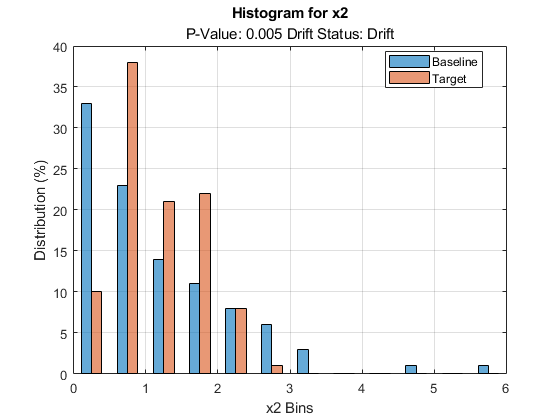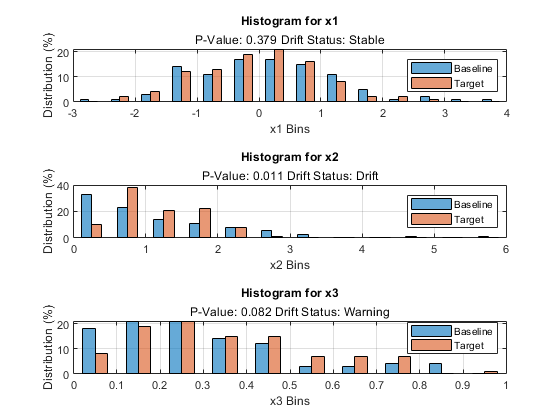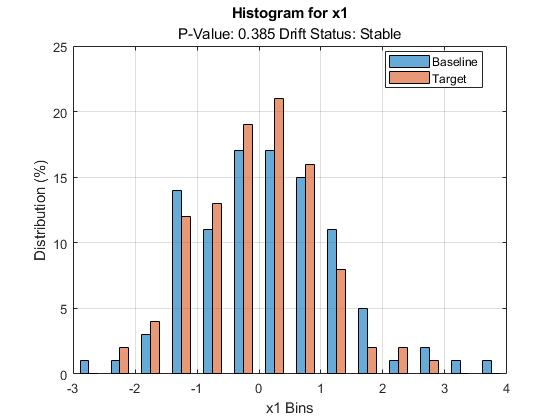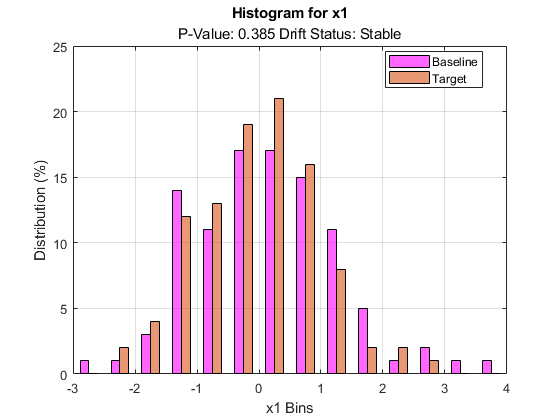plotHistogram
Syntax
Description
plotHistogram( plots a
histogram of the baseline and target data for the variable with the lowest
p-value computed by the DDiagnostics)detectdrift
function.
If you set the value of EstimatePValues to
false in the call to detectdrift, then
plotHistogram displays NaN for the
p-value and the drift status.
plotHistogram(
plots the histogram of the baseline and target data for the variable specified by
DDiagnostics,Variable=variable)variable.
H = plotHistogram(___)Histogram objects in
H. Use H to inspect and modify the properties of
the histogram. For more information, see Histogram Properties.
Examples
Input Arguments
Algorithms
For categorical data,
detectdriftadds a 0.5 correction factor to the histogram bin counts for each bin to handle empty bins (categories). This is equivalent to the assumption that the parameter p, probability that value of the variable would be in that category, has the prior distribution Beta(0.5,0.5), (Jeffreys prior assumption for the distribution parameter).plotHistogramtreats a variable as ordinal for visualization purposes in these cases:The variable is ordinal in either the baseline data or the target data, and the categories from both the baseline data and the target data are the same.
The variable is ordinal in either the baseline data or the target data, and the categories of the other data set are a subset of the ordinal data.
The variable is ordinal in both the baseline data and the target data, and categories from either data set are a subset of the other.
If a variable is ordinal,
plotHistogrampreserves the order of the bin names.
Version History
Introduced in R2022a
See Also
detectdrift | DriftDiagnostics | plotDriftStatus | plotEmpiricalCDF | plotPermutationResults | ecdf | summary | histcounts



